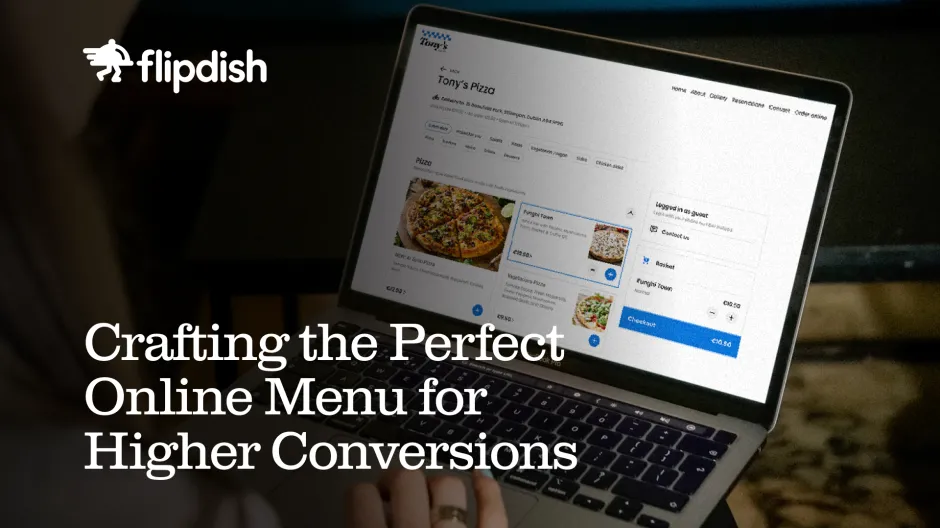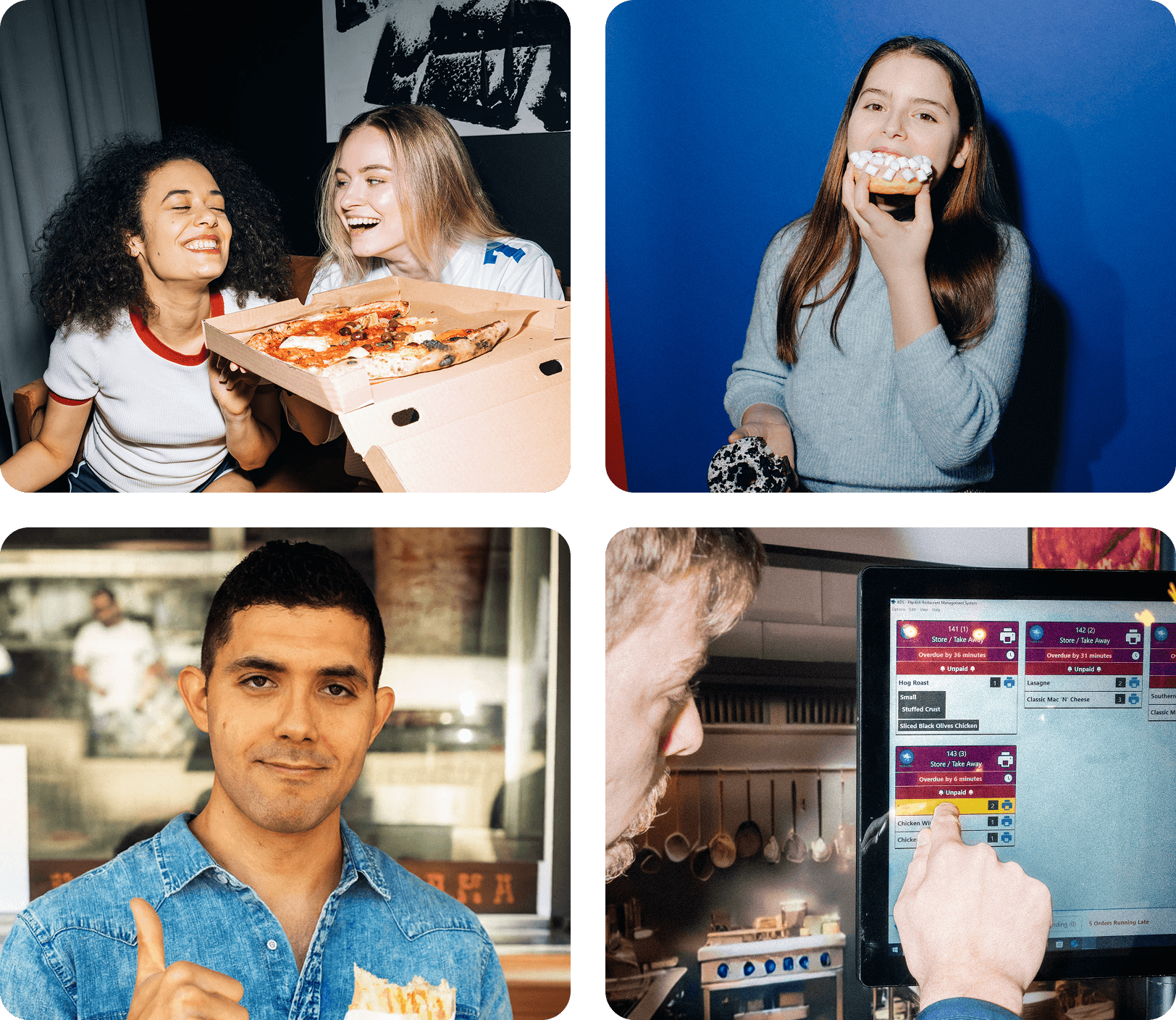Crafting the Perfect Online Menu for Higher Conversions
Your online menu is more than a list of dishes; it’s a powerful tool that can drive sales and increase customer satisfaction. In fact, 70% of consumers prefer to order online direct from restaurants instead of third party apps, making it essential for restaurant owners to perfect their digital menu offerings . Here's how you can create a menu that converts and attracts more orders

How to Design Online Menus That Drive Orders
1. Keep it Simple and Clear
When it comes to menu design, less is more. Overloading customers with too many options can lead to decision fatigue, often resulting in fewer orders or even cart abandonment. Keep your online menu concise and easy to navigate:
Prioritise clarity: Use simple, descriptive language for dish names and descriptions.
Display prices clearly: Ensure that prices are visible and transparent to avoid confusion.
Organise your menu logically: Arrange items by categories like starters, mains, sides, and desserts for easier browsing.
2. Highlight Popular and Profitable Items
To boost sales, strategically position your best-selling and most profitable dishes:
Place popular dishes in prominent spots, such as the top or centre of the menu.
Use bold text, icons, or a different colour to draw attention to high-margin items.
Consider the "golden triangle" layout that guides the customer’s eye to your most profitable dishes.
Looking for ways to Boost Orders & Revenue for your Restaurant/Takeaway?
Access our "Top 10 tips for generating more orders for your restaurant." eBook by filling the form below.

3. Use High-Quality Photos
Visuals are key to enticing customers online, with food photos increasing order conversion rates by 30% . High-quality photos make dishes more appealing and can persuade customers to add extra items:
Invest in professional photography to maintain consistency and showcase your food in the best light.
Ensure the images are authentic and represent the actual dishes to avoid disappointing customers.
4. Optimise for Mobile Devices
With majority online orders coming from mobile devices , a mobile-friendly menu is essential:
Use responsive design to ensure your menu looks great on any screen size.
Test your menu across various devices to guarantee readability and seamless navigation.
5. Incorporate Upselling and Cross-Selling Tactics
Maximise your online sales by encouraging customers to spend more through upselling and cross-selling:
Suggest add-ons like extra toppings or sides with high-profit margins.
Offer meal deals, combos, or "bundles" with a slight discount, encouraging larger orders.
Display offers such as "add a dessert for only £2" to increase the average order value.
6. Make Customisation Easy
Today’s diners expect flexibility in their orders. In fact, customers are more likely to order from a restaurant that offers easy customisation:
Allow customers to personalise their meals by selecting toppings, flavours, or portion sizes.
Use checkboxes or dropdown menus to streamline the customisation process and avoid overwhelming the customer.
7. Include Dietary Tags and Preferences
With an increasing demand for dietary-friendly options, make it easy for customers to find dishes that suit their preferences:
Clearly label vegetarian, vegan, gluten-free, or nut-free options.
Consider adding filters so customers can quickly sort through options that cater to their dietary needs.
8. Keep Your Menu Updated
Outdated menus can lead to customer frustration and lost sales. Keep your menu fresh and accurate:
Update it regularly to reflect seasonal changes, ingredient availability, or price adjustments.
Synchronise updates across all platforms where your menu is available, including your website, delivery platforms, and Google My Business listing.
9. Testing and Optimising Menu Performance
No online menu is perfect from day one. The highest-performing restaurants across the UK and Ireland use data to refine and test their menus regularly. Optimisation isn't just about how your menu looks, it's about how it performs. That means tracking what customers click on, where they drop off, and which items lead to the highest order value.
Start by setting clear goals such as improving basket size, reducing bounce rates, or increasing clicks on featured items. Use A/B testing to trial different versions of your menu layout, item names, or promotional tags. For example, test if including an image boosts clicks on a lesser-known dish or if repositioning a popular item at the top of the category leads to more sales.
Analytics tools built into platforms like Flipdish or integrated with Google Analytics give valuable insight into how users interact with your menu. Watch for high-exit points, popular scroll paths, and underperforming items. These metrics help you make small changes that can have a big impact on revenue. Continuous testing ensures your menu stays relevant, persuasive, and perfectly aligned with your customers’ digital behaviour.
Understanding Conversion Psychology in Online Menus
When it comes to online menus, every scroll, click, and pause plays a part in whether a customer places an order. In the fast-paced world of digital dining, attention spans are short and decisions need to feel effortless. Your menu isn't just a list of food items; it's a carefully structured experience designed to influence behaviour and guide users toward making a purchase.
People are more likely to convert when the menu is clear, uncluttered, and visually engaging. Online ordering removes the in-person charm of staff recommendations, so your layout, images, and descriptions need to do the heavy lifting. Too many choices can lead to decision fatigue, where users abandon the process altogether. A well-organised menu that highlights popular items, uses mouth-watering visuals, and limits unnecessary friction helps create confidence and urgency. For restaurants in the UK and Ireland, where competition is tight and convenience is king, crafting a menu that speaks to how customers think is essential for increasing conversions.
Why Menu Design Impacts Online Sales
The way your online menu is designed has a direct effect on how much your customers spend and how quickly they make a decision. In the UK and Ireland, where consumers increasingly prefer digital ordering, the layout and clarity of your menu can be the difference between a full basket and a dropped session. Menu design influences how items are noticed, how value is perceived, and how quickly a customer is able to choose and pay.
Recent industry reports show that restaurants using optimised online menus see up to a 20% increase in average order value. In the UK alone, over 70 percent of food orders now come through digital channels, and mobile browsing makes up the majority. That means your menu has just a few seconds to make an impression. Poor formatting, missing images, or confusing item groupings can lead to indecision and cart abandonment. A strategic layout with strong visual hierarchy, simplified categories, and clear calls to action helps guide customers through the order journey with confidence. For restaurants across the UK and Ireland looking to increase digital conversions, better menu design is one of the most impactful changes they can make.
By optimising your online menu, you not only enhance the customer experience but also position your restaurant for higher conversions and profitability. At Flipdish, we help restaurant owners in the UK and Ireland streamline their online ordering systems for maximum efficiency and revenue growth. Get in touch with us today to learn more about how we can help your restaurant thrive in the digital age.


